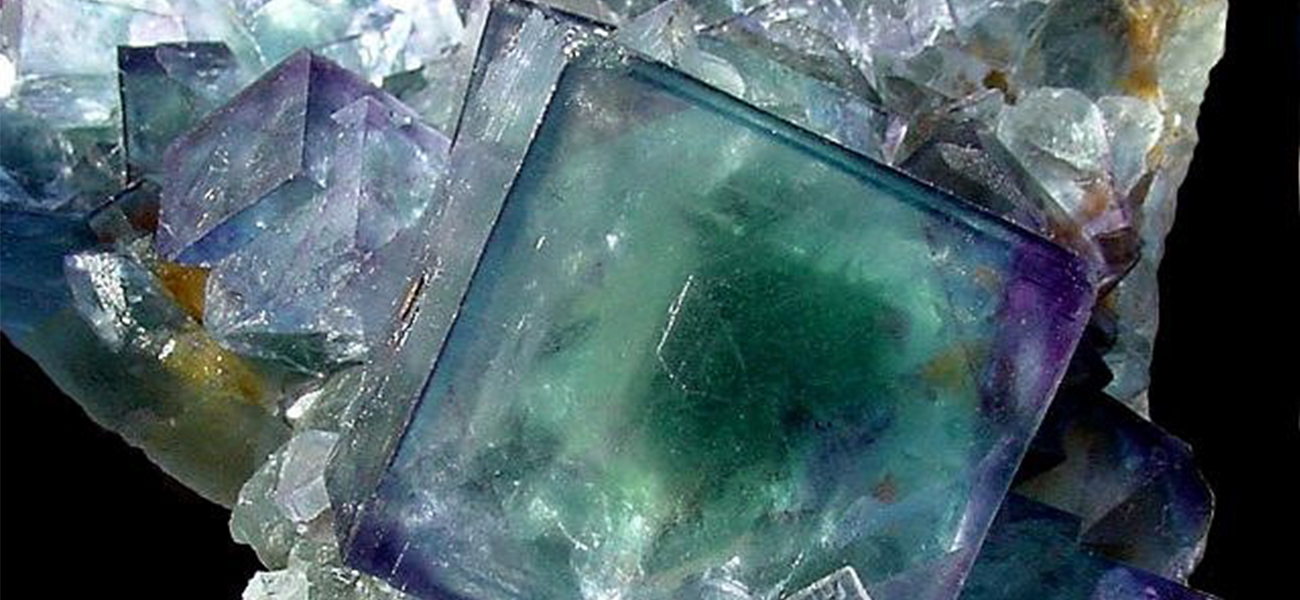99 Introduction
Chapter Outline
15.1 Precipitation and Dissolution
15.2 Lewis Acids and Bases
15.3 Multiple Equilibria

The mineral fluorite, CaF2(Figure), is commonly used as a semiprecious stone in many types of jewelry because of its striking appearance. Deposits of fluorite are formed through a process called hydrothermal precipitation in which calcium and fluoride ions dissolved in groundwater combine to produce insoluble CaF2 in response to some change in solution conditions. For example, a decrease in temperature may trigger fluorite precipitation if its solubility is exceeded at the lower temperature. Because fluoride ion is a weak base, its solubility is also affected by solution pH, and so geologic or other processes that change groundwater pH will also affect the precipitation of fluorite. This chapter extends the equilibrium discussion of other chapters by addressing some additional reaction classes (including precipitation) and systems involving coupled equilibrium reactions.
This resource adds depth to the topic by offering perspectives or examples not covered in the core materials.
Instructions:
- Access the link by selecting the URL below. If you encounter any accessibility issues, please let your instructor or support team know so alternative formats can be provided.
- Read or explore the content at your own pace. You are not required to memorize details but reflect on how the main idea connects to the chapter themes.
Link: Teaching & Sustainability Spotlight: Devin Latimer’s Green Chemistry Labs (University of Winnipeg)

